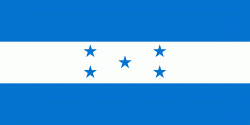Guanaja Airport (Guanaja)
Guanaja Airport (Aeropuerto de Guanaja) is an airport serving Guanaja, an island of the Bay Islands Department in Honduras.
Guanaja is one of the Bay Islands (Islas de la Bahía) located in the Caribbean, approximately 70 km off the north coast of Honduras and 12 km from the island of Roatan.
The airport resides at an elevation of 49 ft above mean sea level. It has one runway designated 12/30 with an asphalt surface measuring 1220 x.
The Roatan VOR-DME (Ident: ROA) is located 36.3 nmi west-southwest of the airport. The Punta Castilla non-directional beacon (Ident: CTL) is located 26.6 nmi south of Guanaja.
Guanaja is one of the Bay Islands (Islas de la Bahía) located in the Caribbean, approximately 70 km off the north coast of Honduras and 12 km from the island of Roatan.
The airport resides at an elevation of 49 ft above mean sea level. It has one runway designated 12/30 with an asphalt surface measuring 1220 x.
The Roatan VOR-DME (Ident: ROA) is located 36.3 nmi west-southwest of the airport. The Punta Castilla non-directional beacon (Ident: CTL) is located 26.6 nmi south of Guanaja.
| IATA Code | GJA | ICAO Code | MHNJ | FAA Code | |
|---|---|---|---|---|---|
| Telephone | Fax | ||||
| Home page |
Map - Guanaja Airport (Guanaja)
Map
Country - Honduras
 |
 |
| Flag of Honduras | |
Honduras was home to several important Mesoamerican cultures, most notably the Maya, before the Spanish colonization in the sixteenth century. The Spanish introduced Catholicism and the now predominant Spanish language, along with numerous customs that have blended with the indigenous culture. Honduras became independent in 1821 and has since been a republic, although it has consistently endured much social strife and political instability, and remains one of the poorest countries in the Western Hemisphere. In 1960, the northern part of what was the Mosquito Coast was transferred from Nicaragua to Honduras by the International Court of Justice.
Currency / Language
| ISO | Currency | Symbol | Significant figures |
|---|---|---|---|
| HNL | Honduran lempira | L | 2 |
| ISO | Language |
|---|---|
| ES | Spanish language |















